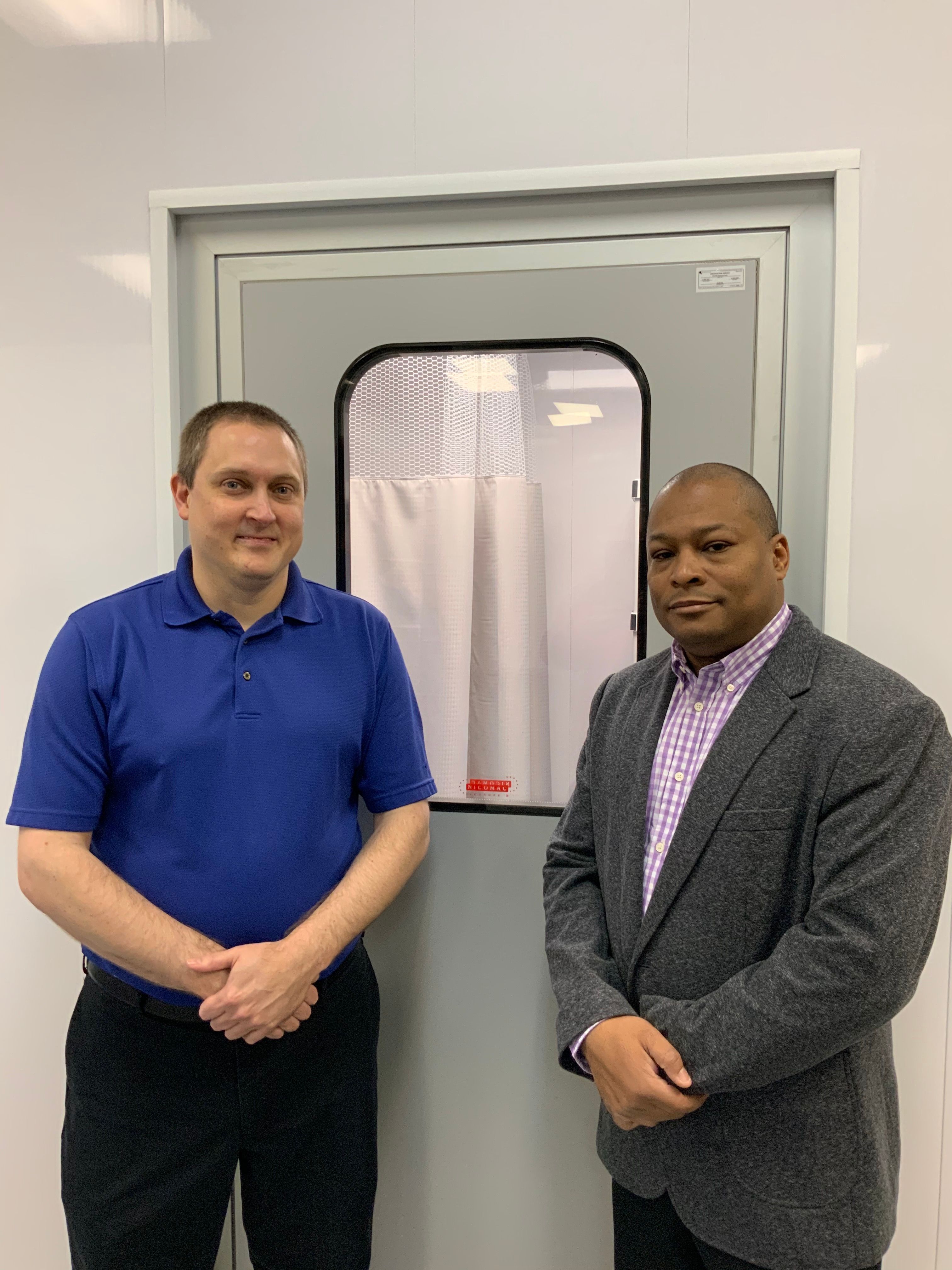Q&A with Dr. Kyle Flanigan, Ph.D., Co-Founder and CEO of USSF
Dr. Kyle Flanigan, Ph.D., discusses the benefits of an oral COVID-19 vaccine.
USSF co-founders Dr. Kyle Flanigan, Ph.D. (on right) and Dr. Garry Morefield, Ph.D. (on the left)

Doctors are still trying to perfect the COVID-19 vaccines. Dr. Kyle Flanigan, Ph.D., co-founder and CEO of USSF, discussed his work with Dr. Garry Morefield, Ph.D., on an oral vaccine against the virus.
(Pharm Exec): What are the benefits to an oral vaccine compared to an injection?
Flanigan: We believe our oral platform is the future of vaccines. It is evident that an oral vaccine does not require needles, thus the additional benefits include ease of use, non-invasive delivery method, and the manufacturing is significantly less risky. The US Specialty Formulations LLC (USSF) COV2-OGEN1 oral vaccine is stable to very high temperatures and does not need the same cold-chain logistics and storage requirements as other vaccines that are currently on the market. A significant feature is that it is stable up to 140° Fahrenheit for more than three months. Further, an oral vaccine does not require a health care practitioner to administer. For a country looking to vaccinate its population, it is an ideal option as more people are likely to take it. Our vaccine shows a significant IgA response in both serum and mucosal systems which is considered key for preventing respiratory infection. It is an oral vaccine that meets people’s lifestyles.
(Pharm Exec): What drew you to develop this vaccine?
Flanigan: Along with my colleague and co-founder Dr. Garry Morefield, we were gearing up for a strep vaccine when COVID-19 struck and they pivoted to focus on COVID as the need was dire, and the technology was seven years down the line and in the late stages of development. The manufacturing capability was already in place, and it was a natural fit to move forward to a human clinical study. USSF’s technology is perfect for respiratory and enteric infection prevention, thus can be adopted to a wide range of target viruses e.g., covid, flu, RSV, Chikungunya, and Nipah, but this list is not exhaustive.
(Pharm Exec): Which strands of COVID is this vaccine effective against?
Flanigan: The human clinical trial was conducted in the presence of Wuhan, Delta, and Omicron, with Omicron being dominant. Our preliminary data shows simultaneous protection against all three strains. The industry has been hunting to develop a vaccine that is able to show protection against multiple strains in a single vaccination. We are on track to adopt the same technology of a flu vaccine. In the future, a single oral dose could provide protection for both flu and COVID.
(Pharm Exec): What are your predictions for the upcoming fall season?
Flanigan: We are going to witness interesting behaviors with flu season coming up and COVID still occurring. We are going to see new strains that will require a wider range of vaccines to combat them. Supply chains will continue to be under pressure as the demand for conventional pharmaceutical manufacturing capacity remains high and suppliers combat challenges on many fronts. Within this environment, another big challenge is to continue developing and working on solutions for other diseases that make people sick and reduces life expectancy.
(Pharm Exec): Why are oral vaccines needed globally and how quickly can they be distributed?
Flanigan: Oral vaccines are needed globally particularly where it is challenging for health care professionals to operate or reach. This is a global problem but it also affects people in the United States. This is also a strategic challenge for the USA as pandemics do not recognize international borders. The COV2-OGEN1 oral vaccine allows the dose to be sent to someone via drone, bicycle, motorcycle, etc. It instantly opens distribution capabilities and removes the invasiveness and restrictions necessary for needle delivery systems. This is potentially a ground-breaking innovation particularly for trypanophobia (the intense fear of needles) and those geographies that do not have easy access to cold storage. With co-funding, we can produce 1.2 million doses a month at our existing facility within a timeframe far faster that what is required for sterile injectables. A country with an approximate population of five million can be fully vaccinated within four to eight months. Partnering with a large pharmaceutical or government entity could shorten the timeframe as their technology can be scaled very quickly.
New Insights Into T Cell Exhaustion and Inflammation in Long COVID
April 17th 2025Nigel McCracken, chief operating officer, Virax Biolabs, discusses new findings that reveal altered cytokine activity and evidence of T cell exhaustion in long COVID patients, providing deeper insight into post-infection immune disruption.
Addressing Disparities in Psoriasis Trials: Takeda's Strategies for Inclusivity in Clinical Research
April 14th 2025LaShell Robinson, Head of Global Feasibility and Trial Equity at Takeda, speaks about the company's strategies to engage patients in underrepresented populations in its phase III psoriasis trials.
Key Findings of the NIAGARA and HIMALAYA Trials
November 8th 2024In this episode of the Pharmaceutical Executive podcast, Shubh Goel, head of immuno-oncology, gastrointestinal tumors, US oncology business unit, AstraZeneca, discusses the findings of the NIAGARA trial in bladder cancer and the significance of the five-year overall survival data from the HIMALAYA trial, particularly the long-term efficacy of the STRIDE regimen for unresectable liver cancer.